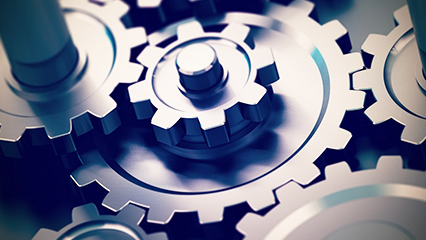
当前课程知识点:Clinical Histology > Chapter6 Nervous System > Myelin > Myelin
返回《Clinical Histology》慕课在线视频课程列表
返回《Clinical Histology》慕课在线视频列表
Hi, everyone. I am Dr. Ma,
from 1st affiliated hospital
of Shantou University Medical College.
Welcome to this session of clinical histology.
Today we will talk about myelin
in the nervous system
Here are the learning objectives for you.
At the end of this session,
students should be able to recognize
the microscopic sections of axon,
myelin and node of Ranvier in nervous tissue
compare the difference of myelinated nerve fibers
in the central & peripheral nervous systems
summarize the myelin changes in patients
with Guillain-Barré Syndrome
Let's start off with a case.
Miss Simmons,
a 28-year-old woman presented
to the Emergency Department at 4 am.
She woke up at night with tingling sensation
in her feet.
Gradually,
she became unsteady while climbing stairs,
then developed weakness in the legs.
Later,
she could not walk and started to lose
control of her body from the feet up.
Physical examination revealed sensory disturbance,
decreased power and loss of tendon reflexes
in both legs.
After lab tests,
the patient was diagnosed
as having Guillain-Barré Syndrome,
called GBS for short.
It is a relatively uncommon disorder
in which the body's immune system
mistakenly launches an attack
on the myelin of the peripheral nerves.
As we already know,
our nerve cells or neurons communicate
by using electrochemical impulses.
Axons of peripheral nerves can be several feet long,
based on whether the axons are covered with myelin,
there are basically 2 kinds of nerve fibers,
myelinated and unmyelinated.
So, what is myelin?
Myelin is formed by glial cells,
but the particular type of glial cell
responsible for myelinating an axon
is different in the peripheral
and central nervous system.
In the peripheral nervous system,
the glial cells,
also called Schwann cells,
produce myelin.
Each Schwann cell wraps around one segment
of an axon many times to form one internode.
In the central nervous system,
oligodendrocytes generate myelin.
One oligodendrocyte can produce dozens of
internodes on multiple axons.
Take Schwann cell for example,
the myelinated cell membrane of the Schwann cell
is very rich in lipid.
It wraps around the axon many times,
very thinly and very tightly.
Ok.
So how does myelin look like under the microscope?
Here
we are looking at the sections of peripheral nerve
prepared with H&E staining.
This is the cross section of a peripheral nerve
showing many round entities.
We can see some kinds of substances in the middle
which are surrounded by a clearer
material on the outside.
Well,
the darker substance in the middle
depicted by our yellow arrow are axons of the neurons.
The neuron body is never found
in a peripheral nerve.
This lighter color indicated by the green arrow
surrounding the axon is myelin
which produced by the Schwann cell.
Now,
we move to the longitudinal section
of the peripheral nerve.
Schwann cell and fibroblast can be identified
on this section.
Schwann cell can be distinguished
by their palely stained nuclei.
The yellow arrow points to the nuclei of Schwann cell.
Fibroblast nuclei are thin and dark.
The red arrow points to the nuclei of a fibroblast.
We can see the axon surrounded by myelin sheath,
except where the node of Ranvieris located.
The black arrow here points to an axon.
Its myelin sheath is denoted by the blue arrow.
A node of Ranvier is shown by the green arrow.
So, What are the differences between myelinated
and unmyelinated fibers in function?
For an unmyelinated axon,
action potential is propagated
by the sequential opening
of voltage-gated sodiumion channels.
So,
as shown on the slide,
when sodium ions rush into the cell,
the inside becomes positive,
and the outside becomes negative.
It opens up the adjacent channel,
allowing sodium ions to rush in
and hence the same process is repeated.
This allows the action potential to travel
from one part of the axon to the next part,
and eventually reaches its target.
However,
lots and lots of voltage-gated sodium channels
need to open up one by one
allowing the electrical signal to move along the axon.
Therefore,
the conduction of electrical signal
through unmyelinated axon
takes a little bit more time.
In contrast,
thanks to the myelin sheaths,
which act like the insulation around an electric wire.
It helps to prevent electrical signals
that are traveling along the axon from decay
due to electrical current leakage
through the membrane.
However,
myelin does not cover the whole axon entirely.
Instead,
there are intermittent gaps in the myelin
where the axon is exposed to
extracellular fluid directly.
These gaps are called nodes of Ranvier
and the sections of myelin
that are adjacent to these nodes
are called internodes.
The nodes of Ranvier are rich in sodium channels,
which open in response to an action potential
traveling down an axon,
allowing positive sodium ions to enter.
Because the internodes are myelinated,
the action potential speeds up as it travels
and then slows down at each node of Ranvier
This gives the appearance that an action potential is
jumping from node to node,
and we call this saltatory conduction
Now let's go back to the case of Miss Simmons.
In GBS,
the myelin coating around the nerves
is damaged by the autoimmune process,
nerves are not able to conduct
electrical impulses normally.
If the injury is severe,
the underlying nerve can even die.
Therefore,
we can see GBS leads to various degrees of
abnormal sensation and weakness
which typically begins at the feet
and gradually goes up the body
as in the case of Miss Simmons.
The weakness can be severe
and lead to paralysis of the respiratory muscle as well,
thus affecting breathing.
That's all for today.
Thank you and here are the references.
See you next time.
-A Brief History of Histology
--A Brief History of Histology
-Test-A Brief History of Histology
-Characteristic Features of Epithelial Tissue
--Characteristic Features of Epithelial Tissue
-Covering Epithelium
-Specialized structures of Epithelial Tissue
--Specialized structures of Epithelial Tissue
-Test-Epithelial Tissue
-Wandering Cells
-Fibers and Ground Substances
--Fibers and Ground Substances
-Cartilage & Bone
-Test-Connective Tissue
-Blood & Hematopoiesis
-Test-Blood & Hematopoiesis
-Skeletal Muscle
-Cardiac Muscle
-Smooth Muscle
-Test-Muscle Tissue
-Myelin
--Myelin
-Cerebellum
-Test-Nerve Tissue and The Nervous System
-Heart
--Heart
-Capillaries
-Test-Circulatory System
-Thyroid
--Thyroid
-Adrenal Cortex
-Test-Endocrine System
-Tongue
--Tongue
-Parietal Cells in Stomach
-Large Intestine
-Liver
--Liver
-Pancreatic Islets
-Test-Digestive System
-From Nasal Cavity to Larynx
-From Trachea to Terminal Bronchiole
--From Trachea to Terminal Bronchiole
-Lung
--Lung
-Test-Respiratory System
-Nephron
--Nephron
-Test-Urinary System
-Seminiferous Tubules in the Testis
--Seminiferous Tubules in the Testis
-Ovarian Follicle
-Test-Reproductive System




